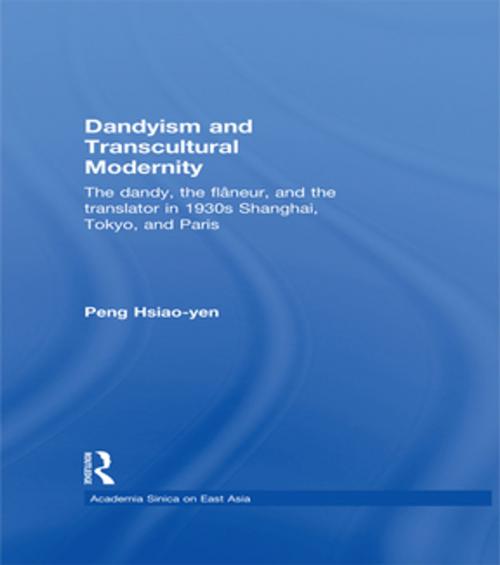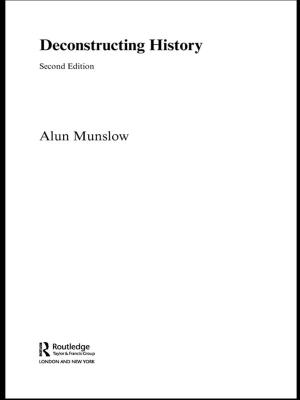Dandyism and Transcultural Modernity
The Dandy, the Flaneur, and the Translator in 1930s Shanghai, Tokyo, and Paris
Nonfiction, History, Asian, Asia, Japan, China| Author: | Hsiao-yen Peng | ISBN: | 9781136941740 |
| Publisher: | Taylor and Francis | Publication: | January 28, 2015 |
| Imprint: | Routledge | Language: | English |
| Author: | Hsiao-yen Peng |
| ISBN: | 9781136941740 |
| Publisher: | Taylor and Francis |
| Publication: | January 28, 2015 |
| Imprint: | Routledge |
| Language: | English |
This book views the Neo-Sensation mode of writing as a traveling genre, or style, that originated in France, moved on to Japan, and then to China. The author contends that modernity is possible only on "the transcultural site"—transcultural in the sense of breaking the divide between past and present, elite and popular, national and regional, male and female, literary and non-literary, inside and outside. To illustrate the concept of transcultural modernity, three icons are highlighted on the transcultural site: the dandy, the flaneur, and the translator. Mere flaneurs and flaneurses simply float with the tide of heterogeneous information on the transcultural site, whereas the dandy/flaneur and the cultural translator, propellers of modernity, manage to bring about transformative creation. Their performance marks the essence of transcultural modernity: the self-consciousness of working on the threshold, always testing the limits of boundaries and tempted to go beyond them. To develop the concept of dandyism—the quintessence of transcultural modernity—the Neo-Sensation gender triad formed by the dandy, the modern girl, and the modern boy is laid out. Writers discussed include Liu Na’ou, a Shanghai dandy par excellence from Taiwan, Paul Morand, who looked upon Coco Chanel the female dandy as his perfect other self, and Yokomitsu Riichi, who developed the theory of Neo-Sensation from Kant’s the-thing-in-itself.
This book views the Neo-Sensation mode of writing as a traveling genre, or style, that originated in France, moved on to Japan, and then to China. The author contends that modernity is possible only on "the transcultural site"—transcultural in the sense of breaking the divide between past and present, elite and popular, national and regional, male and female, literary and non-literary, inside and outside. To illustrate the concept of transcultural modernity, three icons are highlighted on the transcultural site: the dandy, the flaneur, and the translator. Mere flaneurs and flaneurses simply float with the tide of heterogeneous information on the transcultural site, whereas the dandy/flaneur and the cultural translator, propellers of modernity, manage to bring about transformative creation. Their performance marks the essence of transcultural modernity: the self-consciousness of working on the threshold, always testing the limits of boundaries and tempted to go beyond them. To develop the concept of dandyism—the quintessence of transcultural modernity—the Neo-Sensation gender triad formed by the dandy, the modern girl, and the modern boy is laid out. Writers discussed include Liu Na’ou, a Shanghai dandy par excellence from Taiwan, Paul Morand, who looked upon Coco Chanel the female dandy as his perfect other self, and Yokomitsu Riichi, who developed the theory of Neo-Sensation from Kant’s the-thing-in-itself.















